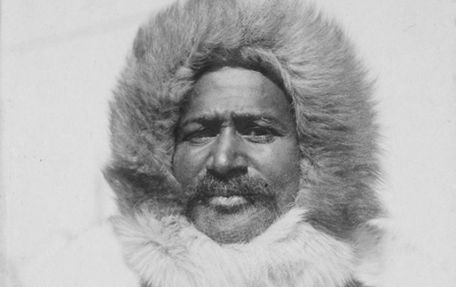19 Facts About Black History That You Might Not Know

he first celebration of Black History Month took place in February 1970. Within six years, it was recognized nationally. The month-long celebration gives all Americans a chance to reflect on the history of African Americans, from their many achievements to the struggles they endure to this day. 50 years later, we continue to set this time aside to praise black Americans who have excelled, overcome, and made history.
Of course, there is much more history to celebrate than can fit in one month’s time. Join us as we honor the African American men and women who made history with these important facts that you may not already know.
1. Phillis Wheatley was only 12 when she became the first female African American author published.

- Photo Credit: Wikimedia Commons
Despite Phillis Wheatley’s fame, we know surprisingly little about her early life. She was taken from her home in Africa when she was seven or eight, and sold to the Wheatley family in Boston. The family taught her to read and write, and encouraged her to write poetry as soon as they witnessed her talent for it. In 1773, Phillis published her first poem, making her the first African American to be published. She was only 12 at the time.
Related: 26 Biographies of Remarkable Women That You Need to Read
Her work was praised by high-ranking members of society, including, perhaps most notably, George Washington. Her writing made her famous throughout the colonies. Not long after her poems were first published, the family that owned Wheatley emancipated her. Unfortunately, her life took a turn from there, especially after the deaths of many of the Wheatleys who had helped support her. She was stricken with poverty. The fame she earned from her writing did little to sustain her husband and children. She fell ill and died at the age of 31.
2. MLK improvised the most iconic part of his “I Have a Dream” speech.

- Photo Credit: Wikimedia Commons
This fact may be the most surprising you’ll find here. When King was originally drafting his speech, the “dream” language was considered but ultimately edited out. He was only allotted five minutes to speak, and he didn’t think he’d have enough time to fit those words. When he handed the speech into the press, the words “I have a dream” were not included.
Related: 10 Essential Books About Martin Luther King, Jr.
When they arrived at the march that morning, King was disappointed at the numbers the media was reporting—only about 25,000 had showed to protest. But by the time they reached the Lincoln Memorial, the numbers had swelled. Maybe this is what inspired King to suddenly change his speech. Whatever the reason, King’s improvisation made history.
3. Hattie McDaniel, the first African American to win an Oscar, wasn’t allowed to attend Gone With the Wind‘s national premiere.

- Photo Credit: Wikimedia Commons
Hattie McDaniel was able to carve out a place for herself in Hollywood despite rampant racism and a consignment to bit parts. She paved the way for many African American women, but not without her fair share of obstacles. Her performance as “Mammy” in Gone With the Wind (1939) won her Best Supporting Actress at the Oscars that year. However, the national movie premiere was in Atlanta. Because of Georgia’s Jim Crow Laws, she was prohibited from attending the event.
Hattie went on to star in over 300 films, was inducted into the Black Filmmakers Hall of Fame in 2006, and was the first Oscar winner to appear on a postage stamp. Despite her ultimate success, her choices (insofar as she had any) in roles were often criticized. The NAACP said Hollywood’s roles for African Americans were narrowed to servants or characters whose main purpose was being comically slow and dim-witted. Hattie was criticized for settling for lesser roles than her white colleagues. Despite this, Hattie went on to have a stellar career.
4. Josephine Baker was a spy for the French during WWII.

- Photo Credit: Wikimedia Commons
Josephine Baker, one of showbiz’s most iconic performers, left the United States due to the overt racism she encountered in 1937. After marrying a Frenchman, Jean Lion, she moved to Paris and renounced her U.S. citizenship. In 1940, when the Nazis began their occupation of Paris, Baker showed just how deep her loyalty to her adopted nation was, becoming a spy for the Allies. During her travels across Europe to perform, Baker would conceal messages within her costumes or her sheet music for other Allied spies. She also used her status as a desired society presence to eavesdrop at various embassy events and balls.
5. The ban on interracial marriage in the U.S. was overturned because of one couple in 1967.
Mildred and Richard Loving left their home state of Virginia to get married. They were warned by Virginia state officials that getting married would be a violation of state law, as Richard was white and Mildred was not. When they returned home, Mildred was promptly arrested. When she was finally released, the couple was referred to the American Civil Liberties Union by Robert Kennedy. The ACLU, seeing an opportunity to end anti-miscegenation laws, jumped at the chance.
After making their way through local and state courts, Loving v Virginia was put before the Supreme Court, and the bans on interracial marriage were deemed unconstitutional. It was a landmark victory for couples of different races, and the Lovings are often heralded as being the catalysts for making it happen. The last law formally prohibiting interracial marriage was overturned in Alabama in 2000. The Lovings were featured in a 2016 biopic, Loving, starring Ruth Negga and Joel Edgerton.
6. Martin Luther King Jr. was assassinated on Maya Angelou’s 40th birthday.

- Photo Credit: Alchetron
It may not be entirely surprising that Martin Luther King Jr. and Maya Angelou became friends during the Civil Rights era. Two prominent voices in the Civil Rights Movement, their paths crossed when Angelou was the coordinator for the Southern Christian Leadership Conference, and King paid the group a visit. In one of her autobiographies, she recalls MLK being shorter and younger than she expected but also said that he was friendly and constantly cracking jokes.
When King died on Angelou’s birthday, the writer was devastated. She stopped celebrating her birthday for many years following his death and sent flowers to King’s widow, Coretta Scott King, for more than 30 years, until Coretta died in 2006.
7. Nine months before Rosa Parks, there was a young woman named Claudette Colvin.

- Photo Credit: Wikimedia Commons
On December 1, 1955, Rosa Parks refused to relinquish her seat on a public bus. Parks’ protest sparked the Montgomery bus protests and galvanized the Civil Rights Movement. Yet she was not the first African American individual in Montgomery to stand up against injustice in such a manner. On March 2, 1955, fifteen-year-old Claudette Colvin was riding home on a city bus after a long day at school. A white passenger boarded, and the bus driver ordered Claudette to give up her seat. Claudette refused. As she later told Newsweek “I felt like Sojourner Truth was pushing down on one shoulder and Harriet Tubman was pushing down on the other. I was glued to my seat.”
Related: On This Day: Rosa Parks Was Born
Colvin was arrested for her civil disobedience and briefly put in jail. The NAACP and other civil rights groups considered rallying around Colvin’s case in their campaign against Alabama’s segregation laws before focusing efforts on Rosa Parks’ protest nine months later. Nevertheless, Colvin was one of four plaintiffs in the landmark Browder v. Gayle case of 1956, which ruled that the segregation laws of Montgomery and Alabama state were unconstitutional.
8. Anna Murray was the first African-American woman to be ordained as an Episcopal priest.

- Photo Credit: Wikimedia Commons
This fiery woman exchanged letters with both Eleanor and Franklin Roosevelt for many years and was considered one of Eleanor’s dear friends. Although her work has rather sadly faded from view, Murray’s expertise in law was a vital part of the Civil Rights movement. She worked closely with icons like Thurgood Marshall and Rosa Parks, and was appointed by President Kennedy to the Presidential Commission on the Status of Women in the 1960s, where her work focused on “Jane Crow”: how discrimination against black people particularly and deeply affected black women, and the ways in which sexism and racism combined to affect black women. Murray died of cancer in 1985. In the last decade or so, her work has been brought back to light through various efforts, including making her childhood home a National Historic Landmark, and a blockbuster dual biography of Murray and Eleanor Roosevelt, The Firebrand and the First Lady.
9. Matthew Henson was a key member of the first successful expedition to the North Pole and made seven separate voyages to the Arctic.

- Photo Credit: Wikimedia Commons
On April 9, 1909, Matthew Henson and Robert Peary arrived at the true North Pole. But getting there was no easy feat. The pair had made former attempts, but all had failed, including one where six members of the expedition team died of starvation. After they finally made it in 1909, Henson and Peary went on to explore the arctic for another two decades.
Related: 6 Famous Explorers Who Vanished from the Face of the Earth
However, because this was the early 1900s, upon their return home from the North Pole, Peary was met with extensive praise, while Henson was barely noticed. In 1912, Henson published a memoir titled A Negro Explorer in the North Pole that detailed his Arctic adventures. It helped call attention to his role in the achievement, but he was still mostly forgotten. In 1937, he finally received long-deserved recognition when he was invited to join the New York Explorer’s Club. It wasn’t until 2000, after his death, that Henson was awarded the National Geographic Hubbard Medal.
10. Madam C.J. Walker was an African American entrepreneur who became America’s first female self-made millionaire.

- Photo Credit: Wikimedia Commons
Born in 1867 to former slaves on a Louisiana cotton plantation, Madam Walker rose in power to become America’s first female self-made millionaire. She did so through the creation of the Madam C.J. Walker Company. Headquartered in Indianapolis, Indiana, her company was a cosmetics manufacturer that specialized in beauty and haircare products for African American women.
Related: 9 Essential Books About Slavery in America
Walker’s business prowess was matched only by her philanthropy and activism. She helped establish a YMCA in the black community of Indianapolis and contributed funds to the Tuskegee Institute. Upon moving to New York, she joined the NAACP, donated generously to the NAACP’s anti-lynching fund, and commissioned the first black architect in New York City to build Villa Lewaro, her home on the Hudson where great minds such as W.E.B. Du Bois and Booker T. Washington gathered to discuss social matters important to the African American community.
By the time of her death in 1919, she was known not only as a remarkably successful African American business owner, but one of America’s most successful entrepreneurs of all time.


No responses yet